Bayard & Holmes
~ Jay Holmes
If You Meet the Buddha On the Road to Shambhala, Kill Him Quick
On the morning of March 20, 1995, as workers in Tokyo, Japan, crowded into the city’s efficient subway system, five members of a political-religious cult entered the subways and conducted well-coordinated sarin nerve gas attacks with five getaway drivers waiting for them outside. The attacks killed fourteen innocent people and injured over five thousand more. It was planned and conducted by the now-infamous Aum Shinrikyo religious/political cult.
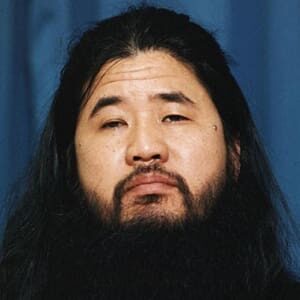
Shoko Asahara
Image Fair Use Exception
The cult’s leader was the self-anointed “Divine Emperor”/Buddha/Jesus Christ of Japan, Shoko Asahara, previously named Matsumoto Chizuo. It’s easy to dismiss Asahara as a common religious/political nut job, though to a degree he was exactly that. However, he was also more than that and that’s what made him dangerous.
Had Asahara just been a run-of-the-mill peddler of a poorly-designed hybrid religion, blathering political theories to a small group of gullible followers, he would never have pulled off such a dangerous coordinated attack. So, in the relatively homogeneous society of Japan, how did this particular Japanese brand of terrorists manage to rock the Japanese world? Rome wasn’t built in a day, and neither was the Aum Shinrikyo cult.
In the Beginning
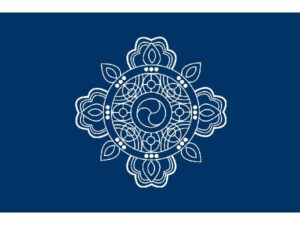
Aum Shinrikyo Symbol
Asahara’s early formation of his cult is not clearly documented in the public domain. However, we do know that in 1984, a pharmacist named Matsumoto Chizuo founded the “Aum Mountain Hermits’ Society” as a yoga and meditation class. Later, Matsumoto renamed himself Shoko Asahara, and the group was renamed “Aum Shinrikyo.”
By 1989, Aum Shinrikyo was known to many in the Japanese government and in the public. The cult had begun accumulating accusations of forced recruitments, of recruits being forced to remain in the cult, and of recruits being forced to make payments to the cult. Unfortunately, in Japan at that time, new religious cults were common, and both the government’s and society’s attentions were divided by several strange cults.
When any society’s attentions are divided by multiple new, seemingly anti-social groups, it’s easy for a dangerous terrorist to slip through the cracks of that society’s safeguards.
Criminologists might define Asahara as a psychopath or sociopath. Whatever the precise diagnosis, Asahara, unlike so many run-of-the-mill terrorists, cannot be accused of having too narrow a focus. His vision, while anti-social, violent, destructive, and self-aggrandizing, was also quite broad. His cult branched into a variety of business ventures, including launching a successful publishing company. The Aum Shinrikyo used the company to publish short stories and comic books that displayed the cult’s colorful spiritual ideas in super-hero fashion.
Asahara preached a set of beliefs that borrowed from Indian and Tibetan Buddhism, Christianity, Hindu, and pieces of Isaac Asimov’s Science fiction books. The first strong, important clue of Asahara’s destructive manipulations is that he preached his own brand of Armageddon. He claimed that Armageddon would occur with an all-out nuclear war and that anyone who did not follow him would go from nuclear Armageddon to eternal hell.
And here’s a cute detail that separated him from other Armageddon believers. Non-believers could be saved from eternal hell if they were killed by members of the Aum Shinrikyo. Members of the cult would themselves be saved from Armageddon and would rebuild an elitist pseudo-Japanese world called Shambhala. That was a major leap from Yoga and meditation.
Oddly, the colorful Shambhala scam attracted many well-educated people, many of whom were from wealthy families with high social status at a time when social status still loomed very large in Japanese society. One can easily understand how the elitist nature of Asahara’s cult might have appealed to a variety of people in Japanese society, but it’s curious that they would have accepted such an outlandish cult led by an obvious egomaniacal criminal. What does that indicate about the sociology of Japanese culture of the 80s and 90s that so many well-educated and successful people could have been sucked into such a strange cult? It is for psychologists and sociologists to figure that one out.
Aum Shinrikyo Gains Official Status
In August 1989, the Japanese government granted the Aum Shinrikyo religious status. That allowed them tax-free status and more leeway from any government oversight.
At some point, Asahara had become involved with Japan’s Organized crime magnates, the Yakuza. Aum Shinrikyo’s new tax status made the group a wonderful money-laundering partner for the Yakuza. In the following six years, Aum Shinrikyo amassed over a billion dollars in wealth.
Prior to receiving government sanction as a religious group, one of their initiates was accidentally drowned in a ceremony. His remains were quickly cremated and disposed. His friend, a fellow initiate, realized that the cult was not all that it claimed, and when he tried to leave it, he vanished.

Tsutsumi Sakamoto, wife Itsuko, & son Tatsuhiko
Fair Use Exception
Shortly after the cult received recognition as a religious group, a lawyer by the name of Tsutsumi Sakamoto was developing a class action suit against the Aum Shinrikyo. Six members of the cult murdered him, his wife, and his child. At the time, the police were unable to solve the case, but during the later broad and energetic investigation of the subway gas attacks, the case of the then-missing lawyer and his family was solved.
Aum Shinrikyo’s wealth grew, and so did its confidence. As the cult got away with major crimes, the leadership became yet more emboldened. It seems that, like many modern Western corporations and their wealthy potentates with political agendas, financial success and escaping justice for crimes committed was seen by many members as proof of their righteousness.
Unlike in most cults, Asahara was wise enough to utilize the talents of his many well-educated followers. This made him ever more dangerous and allowed the cult to produce sophisticated and appealing new recruiting materials and strategies. The cult invested heavily in expanding recruitment operations. They peddled a “happiness and health improvement” agenda as part of their recruitment efforts. Their work paid dividends. Their membership grew much faster than any of the many competing cults and legitimate new groups.
As Aum Shinrikyo grew in wealth, numbers, and confidence it also became more daring in its criminality. The cult leadership’s business relationship with the Yakuza no doubt helped them perfect their criminal skills. In particular, they ran highly-successful extortion rackets. Health care fraud was an area of great success for them. No one’s health improved much, but the cult’s finances did.
Political Failure
In 1990, Asahara decided to run 25 of his members for seats in the Japanese Diet (Japan’s version of a Parliament). Apparently, most Japanese voters were unimpressed. None of the cult’s candidates came close to winning a seat.
Asahara explained away the crushing defeat by using the tried-and-true “blame the Jews and Masons” method. This was too flimsy for even some of his cult members. They had seen enough of Japan to know that there were not enough Jews or Masons in Japan to conduct any conspiracy against anyone. Many woke up and escaped the cult.
Those that remained behind explained away the departure of so many members by claiming that a divine force had driven the departed away from their elite cadre because they were unworthy of the salvation that members would enjoy.
Oddly, while the cult was losing members in Japan in 1991, its recruiting efforts in Russia began to pay off. By 1995, Russian membership had grown to about 35,000 members.
Embracing Terrorism
Asahara decided that the 1990 political debacle was a divine sign that it was time to join the fun and exciting world of terrorism. “If you won’t obey us, we’ll just kill you all.”
Any student of terrorism has heard that basic twisted logic a few (hundred) times. Asahara ordered his most-trusted members to produce botulinum bacteria and phosgene gas. The plan was to weaponize these substances and use them to overthrow the Japanese government.
Assistant terror leader Seiichi Endo was placed in charge of the WMD project. Endo’s team tried to reproduce Botulinum toxin in three 10,000 liter fermenters. They managed to produce 9000 liters of something similar to botulinum.
Oddly, and thankfully, they ignored their own test data indicating that their product, though malodorous, was not particularly toxic. This perhaps indicates that their state of mind had taken a turn from reality.

Japanese National Diet Building
Image by Synthetik, public domain
Seiichi was not your average illiterate hash-smoking, whiskey-guzzling terrorist dupe. He had graduated veterinary school and had gone on to grad school to study virology and genetic engineering. He knew better, yet he ignored the test data and moved forward with the plot relying on the ineffective toxin product.
Perhaps he was somewhat demoralized by the departure of all of the cult’s most realistic members. Overall, what remained might not have been the intellectual A-team. The plot went forward. The results were almost comical. The release of aerosolized non-toxins at three separate locations, including the Diet, resulted in no deaths and no panic. It resulted in a nauseating stench. Asahara must have been acutely frustrated, but he stayed the course.
Ramping Up the Violence
Asahara told an unknown number of his cult terrist thugs to organize the production of one thousand AK-74 automatic rifles (not the usual AK- 47, but the newer AK-74). By 1993, the ex-Soviets in Moscow and their old Eastern European allies were not mass-shipping AK weapons to just any terrorist group who wanted them. Black market gun-runners were still mass-shipping weapons, but on a lesser scale, and they wanted cash up front.

AK-74
Image by DOD, public domain
The cult smuggled in a Russian-made AK-74 and set to work trying to replicate it. In spite of having trained engineers amongst their members and having good machinery, they only managed to produce a single barely-working model.
Given that illiterate gunsmiths in Pakistan routinely produce AK-series weapons knock-offs in primitive home shops and forges, this doesn’t say much for the Aum Shinrikyo weaponeers. Clearly the cult had lost its intellectual edge. It would have been better off bringing in a few Pakistani home gunsmiths or a couple of now-unemployed Kalashnikov employees from Russia. It’s good that they didn’t.
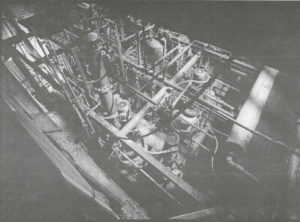
Stayan 7 Aum Shinrikyo chemical plant
Overhead view
Image US Gov, public domain
At the end of 1993, cult members started producing VX gas and sarin. They invested in the best equipment. Unfortunately, they were somewhat successful with this initiative.
In 1994, Aum Shinrikyo sent cult members along with sarin, and VX samples to Australia in the hope of testing the chemicals. The cult members successfully tested both of them on sheep. Fortunately, as far as we know, no Australians were killed by the cult’s test activities in the Banjawarn Station area of Western Australia.
On June 27, 1994, the cult escalated its terrorist activities by releasing sarin gas in Matsumoto, Japan, in an attempt to assassinate two judges who were likely to rule against the cult in a real estate case. This time, Aum Shinrikyo managed to kill eight people and injure about five hundred more. The police in Matsumoto were not focused on the cult at the time, and they failed to solve the case until the investigation of the 1995 Tokyo subway attacks.
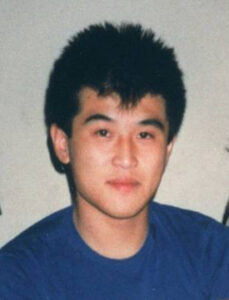
Masami Tsuchiya
Image Japan Times, Fair Use Exception
From December of 1994 to January of 1995, Masami Tsuchiya, an Aum Shinrikyo devotee who held Masters Degrees in physical chemistry and organic chemistry, synthesized about 150 grams of VX gas. The gas was used in three assassination attempts. Two victims were injured and one was killed. Again, the police did not connect the crimes to the Aum Shinrikyo and had suspected that the victim who died had been exposed to pesticides. Again, the murder was not solved until after the Tokyo subway attacks.
By 1995, Japanese police were investing more resources in watching Aum Shinrikyo cult members. On April 6 of that year, after the sarin gas attack, Tokyo Police seized AK-74 parts from a vehicle driven by a cult member, and their interest in the cult heightened.
In February of 1995, cult members kidnapped the brother of an escaped member. The victim, Kiyoshi Kariya, had received several death threats from the cult and left behind notes indicating that if he disappeared or died, it would be because of the Aum Shinrikyo. When he vanished, the police again intensified their efforts against the cult.
The Deadly Subway Attacks
The Japanese police and prosecutors started organizing for simultaneous raids against multiple known and suspected locations of the Aum Shinrikyo. Prosecutors claim that Asahara was tipped off before the raids and that he accelerated his planning for the subway attacks.
Then it happened.
On the morning of March 20, 1995, ten cult members released something similar to sarin gas at five different subway locations at stations near the Japanese Diet. They hoped to cause mass deaths that would disrupt the Diet. The disruption was, in Asahara’s sick mind, going to cause widespread rioting and rebellion around Japan. It didn’t. It did, however, kill thirteen innocent people and injure approximately six thousand more. Fortunately, the cult members used less than ideal methods for dispersing the gas, otherwise the casualties would have been far worse.
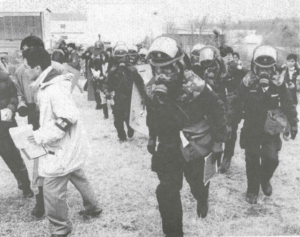
Emergency Personnel Responding to
Sarin Attacks in Subway
March 20, 1995
Image US Gov, public domain
The police conducted a raid and arrested one hundred fifty cult members. Many lesser members were identified and located, but not arrested. The police understood that not all of the cult’s 18,000 members in Japan were part of terror activities. Authorities did their best to identify the actual criminals and round them up.
It took until November 27, 2004, to conclude the trials of 189 indicted cult members. Thirteen, including Asahara Shoko, were sentenced to death. Five were sentenced to life in prison. Eighty were given sentences less than life. Eighty-seven received suspended sentences. Two got off with fines. One was declared not guilty.
In 2018, after all legal appeals were exhausted, the death sentences were finally carried out.
There are approximately two thousand members of the Aum Shinrikyo cult remaining in Japan today, with thousands more around the globe. They have rebranded themselves as “Aleph.” They have publicly distanced themselves from the cult’s past violence but claim to still believe the group’s hybrid theology. They conduct several businesses, but with limited success. The public in Japan usually boycotts any business discovered to be related to Aleph. The group remains under police surveillance at the time of this article, and Aleph locations may be searched by police at any time.
Shambhala never happened. It never will.
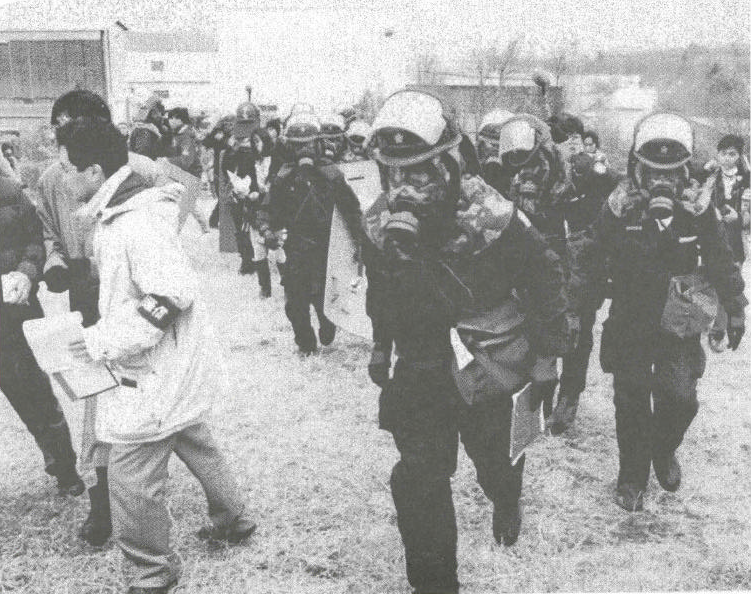
Recent Comments